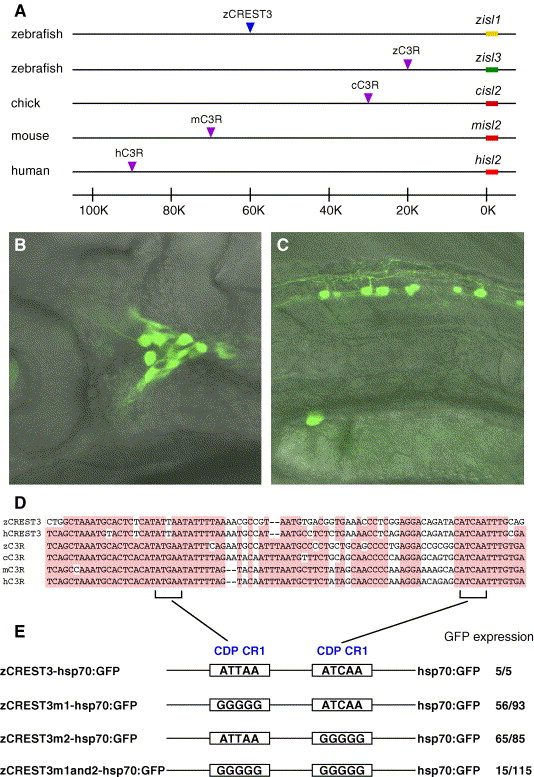Fig. 9 Structural and functional conservation of sensory neuron-specific enhancers CREST3 and C3R. (A) Comparison of the distribution of CREST3 and C3R in each species. Yellow and green bars indicate the coding regions of zebrafish isl1 and isl3, respectively. Red bars indicate the coding regions of isl2 of chick, mouse, and human. The blue arrowhead indicates zCREST3 locus. In contrast, purple arrowheads indicate the C3R loci. No similar sequences to C3R were found in the fugu genome. (B and C) Lateral views of 32-hpf embryos injected with the zC3R-hsp70:GFP plasmid and GFP expression in the trigeminal ganglion neurons (B) and Rohon-Beard neurons (C). (D) Sequence comparisons between CREST3 and C3R. Only the most conserved regions between CREST3 and C3R are shown. Nucleotides conserved in more than four of all are shaded by the red color. The entire nucleotide sequences of zC3R, cC3R mC3R, and hC3R were deposited in DDBJ under accession numbers AB179552, AB179553, AB179554, and AB179555, respectively. The highly conserved region between CREST3 and C3R contains two CDP CR1 recognition motifs (brackets). (E) Mutational analysis of zCREST3. Both or either of the CDP CR1 sites was converted to GGGGG. The number on the right side of the name of each plasmid construct indicates the number of embryos exhibiting expression of GFP in primary sensory neurons among all injected embryos.
Reprinted from Developmental Biology, 278(2), Uemura, O., Okada, Y., Ando, H., Guedj, M., Higashijima, S., Shimazaki, T., Chino, N., Okano, H., and Okamoto, H., Comparative functional genomics revealed conservation and diversification of three enhancers of the isl1 gene for motor and sensory neuron-specific expression, 587-606, Copyright (2005) with permission from Elsevier. Full text @ Dev. Biol.

